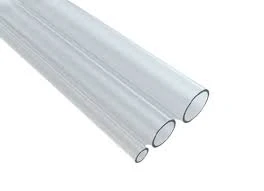Oct . 11, 2024 14:03 Back to list
PPR Pipe Fittings for Efficient Water Distribution Systems
Understanding PPR Water Pipe Fittings A Comprehensive Guide
In the realm of plumbing and construction, the choice of materials is paramount to ensure durability, efficiency, and cost-effectiveness. Among the various options available, Polypropylene Random Copolymer (PPR) pipes and fittings have gained significant popularity. This article will provide a detailed overview of PPR water pipe fittings, discussing their composition, advantages, installation methods, and applications.
What Are PPR Water Pipe Fittings?
PPR water pipe fittings are components made from polypropylene, a thermoplastic polymer known for its excellent mechanical and thermal properties. These fittings are specifically designed for water distribution systems, including hot and cold water supply. The fittings come in various shapes, sizes, and configurations, such as elbows, tees, couplings, and reducers, allowing for versatile plumbing solutions.
Advantages of PPR Pipe Fittings
1. Durability PPR fittings are highly resistant to corrosion, rust, and chemical damage, making them ideal for use in both residential and industrial applications. They have a long lifespan, often exceeding 50 years under normal conditions.
2. Temperature Resistance PPR pipes can withstand high temperatures, making them suitable for hot water applications, withstanding temperatures up to 90 degrees Celsius. This characteristic is crucial for plumbing systems that require both hot and cold water.
3. Low Thermal Conductivity PPR fittings have low thermal conductivity, reducing heat loss in hot water systems. This property enhances energy efficiency and can lead to significant savings on energy bills.
4. Lightweight The lightweight nature of PPR fittings makes transportation and installation easier compared to heavier materials like metal pipes. This also leads to lower shipping costs and easier handling at the construction site.
5. Easy Installation PPR fittings are usually joined using a simple heat fusion process, which creates a strong, leak-proof connection. This method not only ensures a seamless installation but also reduces the need for additional materials like adhesives or joints.
ppr water pipe fittings

6. Environmental Friendly PPR fittings are recyclable, making them a more sustainable choice compared to other plumbing materials. This eco-friendly characteristic appeals to environmentally conscious consumers and builders.
Installation Methods
The installation of PPR fittings requires specific techniques to ensure that pipes are welded properly for optimal performance. The most common method is the butt fusion technique, which involves heating both the fitting and the pipe ends until they soften, then pressing them together. Other methods include electro-fusion and socket fusion, depending on the specific requirements of the project. Proper training and adherence to guidelines are essential to achieving a strong bond and preventing leaks.
Applications of PPR Pipe Fittings
PPR water pipe fittings have a wide range of applications across various industries. They are commonly used in
- Residential Plumbing Ideal for hot and cold water distribution, PPR fittings are prevalent in homes for both new installations and upgrades. - Commercial Buildings In office buildings and shopping centers, PPR systems are used for their durability and resistance to pressure. - Agricultural Irrigation The corrosion-resistant properties of PPR make these fittings suitable for irrigation systems, contributing to efficient water distribution in agriculture.
- Industrial Applications Many industries utilize PPR for conveying fluids due to its chemical resistance and reliability under varying temperature and pressure conditions.
Conclusion
PPR water pipe fittings are a modern solution for plumbing needs, offering numerous advantages such as durability, ease of installation, and environmental benefits. As the demand for reliable and sustainable plumbing systems grows, PPR fittings are likely to become even more prevalent in both residential and commercial applications. Understanding their properties and applications can help builders, plumbers, and homeowners make informed choices, ensuring the long-term success of their water distribution systems.
-
PVC Transparent Sheet Roll - Durable & Flexible PVC Plastic Sheet Roll for Industrial & Home Use
NewsJun.24,2025
-
High-Quality PVC PPR Pipes and Fittings Durable ERA PPR Solutions
NewsJun.10,2025
-
High-Quality Large HDPE Sheets & Large Diameter PVC Pipe Durable Large PVC Pipe Supplier
NewsJun.10,2025
-
High Density Polyethylene Cutting Board - Durable & Food Safe
NewsJun.09,2025
-
3 Inch PVC Pipe for Durable Irrigation Affordable & Reliable
NewsJun.09,2025
-
Premium PPR Plastic Water Pipe Fittings - Durable & Leak-Free
NewsJun.09,2025

